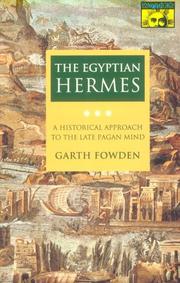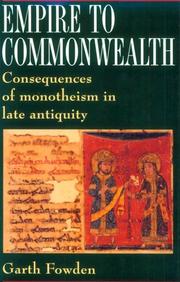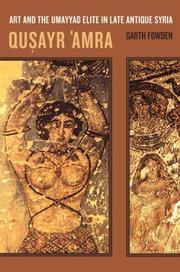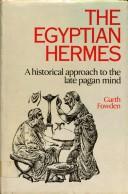| Listing 1 - 10 of 16 | << page >> |
Sort by
|

ISBN: 0691024987 Year: 1993 Volume: *2 Publisher: Princeton (N.J.): Princeton university press
Abstract | Keywords | Export | Availability | Bookmark
 Loading...
Loading...Choose an application
- Reference Manager
- EndNote
- RefWorks (Direct export to RefWorks)
Hermeticism --- Hermetism --- Hermetisme --- Hermétisme --- 273.1*33 --- Paganism --- -Egypt --- -Civilization, Pagan --- Heathenism --- Religions --- Occultism --- Corpus hermeticum --- History --- Religion --- Hermes Trismegistus --- Ermete, --- Hermes Mercurius, --- Hermès, --- Hermes, --- Hermes Trismegistus. --- Mercurius, --- Thoth, --- Trismegistus, Hermes --- هرمس، --- 273.1*33 Corpus hermeticum --- -Corpus hermeticum --- -Hermeticism --- Civilization, Pagan --- Hermès Trismégiste --- Egypt --- Religion. --- Ermete Trimegisto --- Ermete Trismegisto --- Hermes Mercurius Trismegistus --- Hermès Trismégiste --- Hermes Trismegistos --- Mercurius Trismegistus --- Thoth

ISBN: 0691069891 0691015457 9780691069890 140084424X Year: 1993 Publisher: Cambridge ; New York, NY : Princeton University Press,
Abstract | Keywords | Export | Availability | Bookmark
 Loading...
Loading...Choose an application
- Reference Manager
- EndNote
- RefWorks (Direct export to RefWorks)
In this bold approach to late antiquity, Garth Fowden shows how, from the second-century peak of Rome's prosperity to the ninth-century onset of the Islamic Empire's decline, powerful beliefs in One God were used to justify and strengthen "world empires." But tensions between orthodoxy and heresy that were inherent in monotheism broke the unitary empires of Byzantium and Baghdad into the looser, more pluralistic commonwealths of Eastern Christendom and Islam. With rare breadth of vision, Fowden traces this transition from empire to commonwealth, and in the process exposes the sources of major cultural contours that still play a determining role in Europe and southwest Asia.
Religion and civilization. --- Monotheism. --- Religion et civilisation --- Monothéisme --- Byzantine Empire --- Islamic Empire --- Rome --- Empire byzantin --- Empire islamique --- Civilization. --- Civilization --- Christian influences. --- Civilisation --- Influence chrétienne --- Rome (Italy) --- Monotheism --- Religion and civilization --- Civilization and religion --- God --- Pantheism --- Polytheism --- Religion --- Theism --- Trinity --- -Civilization --- -Rome --- Arab countries --- Arab Empire --- Empire, Islamic --- Middle East --- Muslim Empire --- -Christian influences. --- History --- Monothéisme --- Influence chrétienne --- Rim --- Roman Empire --- Roman Republic (510-30 B.C.) --- Romi (Empire) --- Cywilizacja islamska --- Religia i kultura. --- Monoteizm. --- Rzym (państwo) --- Bizantyjskie, Cesarstwo --- cywilizacja. --- Abbasids. --- Arabia, southern. --- Baghdad. --- Buddhism. --- Caliphate. --- Cappadocia. --- Diocletian, Roman emperor. --- Edessa. --- Ethiopia. --- Ghassanid Arabs. --- Goths. --- Himyar. --- Iberia (Eastern Georgia). --- Indian Ocean. --- Islamic Empire. --- Jerusalem. --- Julian, Roman emperor. --- Kebra Nagast. --- Khusrau I, Sasanian emperor. --- Manichaeism. --- Mazdaism. --- Najran. --- Nestorianism. --- Ottomans. --- Romano-Iranian relations. --- Sasanian Empire. --- Spain. --- Umayyads. --- Zarathushtra. --- commonwealth. --- polytheism. --- Paganisme et christianisme

ISBN: 0520236653 Year: 2004 Volume: 36 Publisher: Berkeley (CA) : University of California Press,
Abstract | Keywords | Export | Availability | Bookmark
 Loading...
Loading...Choose an application
- Reference Manager
- EndNote
- RefWorks (Direct export to RefWorks)
Mural painting and decoration, Umayyad --- Arabic poetry --- Peinture et décoration murales omeyyades --- Poésie arabe --- Foreign influences. --- History and criticism --- Influence étrangère --- Histoire et critique --- Qusayr `Amrah (Jordan : Dwelling) --- Syria --- Syrie --- History --- Histoire --- Qusayr 'Amrah (Jordan : Dwelling) --- Mural painting and decoration [Umayyad ] --- Jordan --- Foreign influences --- 622-750

ISBN: 0521325838 9780521325837 Year: 1986 Publisher: Cambridge Cambridge University press
Abstract | Keywords | Export | Availability | Bookmark
 Loading...
Loading...Choose an application
- Reference Manager
- EndNote
- RefWorks (Direct export to RefWorks)
Comparative religion --- Egypt --- -Civilization, Pagan --- Hermeticism --- Hermes Trismegistus --- Ermete, --- Hermes Mercurius, --- Hermès, --- Hermes Trismegistus. --- Mercurius, --- Thoth, --- Trismegistus, Hermes --- هرمس، --- -Corpus hermeticum --- -Hermeticism --- Hermès Trismégiste --- Hermetism --- Paganism --- 273.1*33 --- Occultism --- 273.1*33 Corpus hermeticum --- Corpus hermeticum --- Civilization, Pagan --- Heathenism --- Religions --- History --- Hermes, --- Religion. --- Religion --- Ermete Trimegisto --- Ermete Trismegisto --- Hermes Mercurius Trismegistus --- Hermès Trismégiste --- Hermes Trismegistos --- Mercurius Trismegistus --- Thoth --- Religion égyptienne --- Religion égyptienne --- Hermes, - Trismegistus --- Egypt - Religion --- Hermetisme

ISBN: 1282357026 9786612357022 0520929608 1597348449 9780520929609 9780520236653 0520236653 9781597348447 1417573716 9781417573714 9781282357020 6612357029 0520236653 Year: 2004 Publisher: Berkeley, Calif. University of California Press
Abstract | Keywords | Export | Availability | Bookmark
 Loading...
Loading...Choose an application
- Reference Manager
- EndNote
- RefWorks (Direct export to RefWorks)
From the stony desolation of Jordan's desert, it is but a step through a doorway into the bath house of the Qusayr 'Amra hunting lodge. Inside, multicolored frescoes depict scenes from courtly life and the hunt, along with musicians, dancing girls, and naked bathing women. The traveler is transported to the luxurious and erotic world of a mid-eighth-century Muslim Arab prince. For scholars, though, Qusayr 'Amra, probably painted in the 730s or' 740s, h'as proved a mirage, its concreteness dissolved by doubts about date, patron, and meaning. This is the first book-length contextualization of the mysterious monument through a compelling analysis of its iconography and of the literary sources for the Umayyad period. It illuminates not only the way of life of the early Muslim elite but also the long afterglow of late antique Syria.
Arabic poetry --- Mural painting and decoration, Umayyad --- Umayyad mural painting and decoration --- History and criticism --- Foreign influences. --- Qusayr ʻAmrah (Jordan : Dwelling) --- History and criticism. --- Arabic poetry - 622-750 - History and criticism. --- abbasid. --- abd al malik. --- al azraq. --- al buldn. --- alois musil. --- amir. --- ancient art. --- apodyterium. --- arab. --- arabic poetry. --- arabic. --- architecture. --- art history. --- bath house. --- baths. --- captive woman. --- court life. --- dancing girls. --- decorative arts. --- desert. --- dynasty. --- femininity. --- frescoes. --- gender. --- hunt. --- hunting lodge. --- iconography. --- iran. --- islam. --- jordan. --- khusraw. --- late antiquity. --- middle east. --- monument. --- murals. --- musicians. --- muslim. --- mythology. --- negus. --- nonfiction. --- ode. --- persia. --- prince. --- princess. --- qusayr amra. --- roderic. --- royal court. --- self fashioning. --- shaykh musa. --- syria. --- umayyad. --- women. --- Qusayr Amrah (Jordan : Dwelling)
Book
ISBN: 1316311074 1316106810 131629045X 110746241X Year: 2015 Publisher: Cambridge : Cambridge University Press,
Abstract | Keywords | Export | Availability | Bookmark
 Loading...
Loading...Choose an application
- Reference Manager
- EndNote
- RefWorks (Direct export to RefWorks)
Judaism, Christianity and Islam - the three scriptural monotheisms, still often studied separately - are here intertwined within a historical frame. The approach outlined in this lecture pivots around the Qur'an as it emerged in seventh-century Arabia on the peripheries of the two world-empires of Iran and Rome, and variously refracts rabbinic Judaism and patristic - especially Syriac - Christianity. The formation and exegesis of scriptural canons helps define the major religious communities and identities both before and after Muhammad. The latter part of the lecture concentrates on the interaction of these communities, and especially their scholars, in the Abbasid Baghdad of the ninth and tenth centuries, and on the theological and philosophical debates that flourished there. The lecture interrogates the newly fashionable concept of 'Abrahamic' religion and proposes a fresh historical periodization inclusive of both late antiquity and Islam, namely the First Millennium.
Religions --- Christianity and other religions --- Interreligious relations --- Relations among religions --- Relations. --- Islam. --- Abraham --- Abraham, --- Abram --- Abramo --- Abū al-Anbiyāʼ Ibrāhīm al-Khalīl --- Abŭraham --- Avraam --- Avraham --- Avram --- Halil-ül-Rahman İbrahim --- Ibrāhīm al-Khalīl --- Ibrahim --- İbrahim, --- Khalīl Allāh --- Nabi Ibrahim --- אברהם --- אברהם אבינו --- إبراهيم الخليل
Book
ISBN: 9780691168401 Year: 2015 Publisher: Princeton Princeton University Press
Abstract | Keywords | Export | Availability | Bookmark
 Loading...
Loading...Choose an application
- Reference Manager
- EndNote
- RefWorks (Direct export to RefWorks)
Book
ISBN: 9781400844241 Year: 2021 Publisher: Princeton, NJ
Abstract | Keywords | Export | Availability | Bookmark
 Loading...
Loading...Choose an application
- Reference Manager
- EndNote
- RefWorks (Direct export to RefWorks)
Book
ISBN: 9781400848164 Year: 2013 Publisher: Princeton, NJ
Abstract | Keywords | Export | Availability | Bookmark
 Loading...
Loading...Choose an application
- Reference Manager
- EndNote
- RefWorks (Direct export to RefWorks)
Multi
ISBN: 9781316106815 9781107462410 Year: 2015 Publisher: Cambridge Cambridge University Press
Abstract | Keywords | Export | Availability | Bookmark
 Loading...
Loading...Choose an application
- Reference Manager
- EndNote
- RefWorks (Direct export to RefWorks)
| Listing 1 - 10 of 16 | << page >> |
Sort by
|

 Search
Search Feedback
Feedback About UniCat
About UniCat  Help
Help News
News